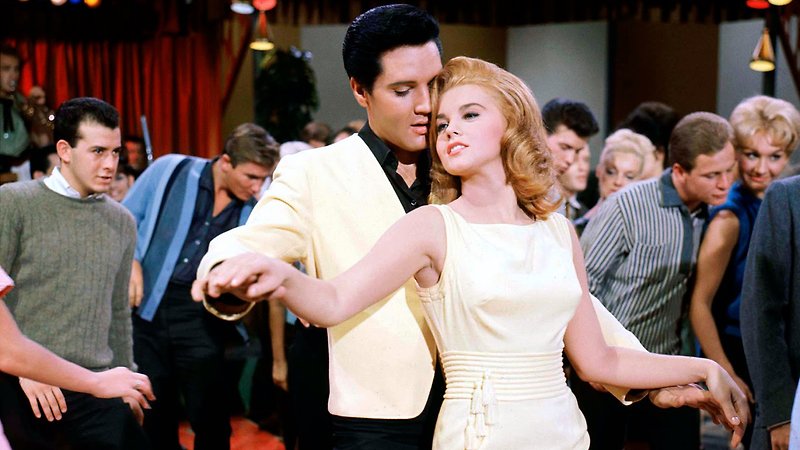
Screened as part of NZIFF 2001
Viva Las Vegas 1964
Shot on location in and around Vegas, the film’s a showcase of swinger style and décor which may have looked try-hard then, but looks pretty fabulous now. (Viva Elvis on water-skis. Viva Elvis auto-racer.) Typically, the musical numbers cover the commercial bases from boisterous Americana to cute show tunes to the driving mafia anthem that gives the film its name. Elvis is compelled to prove yet again that he could sing anything beautifully. There’s a Euro-sleaze rival, sight gags as lame as you’ll ever see, and an ending so abrupt you’ll think we’ve dropped a spool. But nothing can kill the giddy thrill of watching Elvis and Ann-Margret twist, shake and kid each other all the way to pop nirvana. — BG
No longer expected to have anything to do with real rock & roll (or authenticity in general), the King gets knee-deep in cheese and loves every minute of it… He joins a herd of chorus girls for an elaborate (and well-performed) spin through The Yellow Rose of Texas, gracefully trades choice couplets with Ann-Margret on the dainty duet The Lady Loves Me, butchers What I Say? and sends up one of the late twentieth century’s finest odes to itself via the film’s title track: a song so wicked that not even a Dead Kennedys cover could unseat its majesty…
Kitsch or no, Elvis is confident and happy in Viva Las Vegas… Viva lets him get good and greasy as Elvis. His young-buck womanizer here is more akin to the glib and glitz-hungry Frank Sinatra of Pal Joey (1957, interestingly enough) than anything remotely resembling the ‘kid’ in Jailhouse Rock. And Pal Elvis seems strangely liberated, even if behind the scenes he was sinking deeper and deeper into decadence and distance, further and further from the world that had long since surrendered to the beast in him. — Cinema Pages